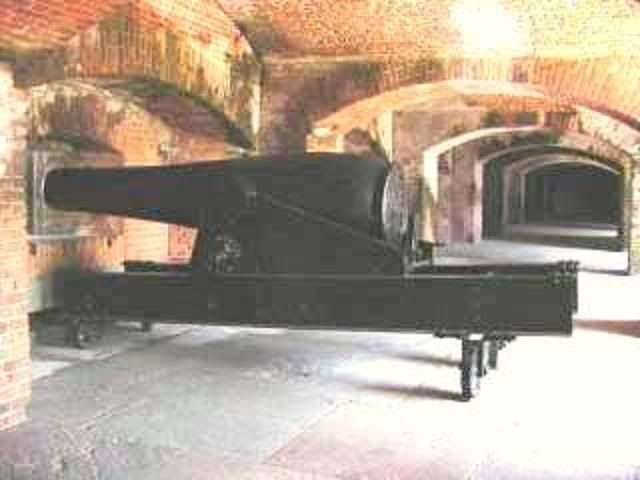Hi Conchshot:
I was browsing thru the Cannon forum today and was astounded to find your posts about the 10 in. Rodmans at Ft. Zachary Taylor.
I was stationed at Fleet Sonar School as an instructor from '69 to '72 and was invited by Mr. Howard England, then an engineer with the Naval Station Public Works, to help him do some exploratory excavations in the fort, so see if there was any ordnance left from the late 19th century modernization. We, a crew of volunteers including some of my sailor students, worked every Saturday from early morning until it got too hot.
The fort was at that time being used as the salvage yard, and had a large area of dredged spoil deposited on the seaward face of the side facing the recreational beach area (away from the harbor). We started by taking soundings with a rod to find any penetrations from the second tier floor down into the first tier gunrooms. We lucked out after a few tries and started removing the sand which covered the flooring. We then exposed the hole in the floor and started removing sand which filled up the gunroom below on the first tier. Sand removal was by discarded 5 gallon cans, pushed out the the edge of the structure on discarded rollers we found in the salvage yard (the frames with rollers that supermarkets use to move produce). Once we were well into the room we had to haul the cans of sand back up through the hole.
Eventually we reached the first tier floor and started clearing away the sand filling the room. (When the fort was modernized, the top two tiers were demolished and the rubble, along with sand from the cover face that protected the landward approach to the fort, was dumped into the empty first tier gunrooms.) We then excavated our way toward the outer face until we reached the original wrought iron Totten shutters which closed the port when the gun was not in firing position (battery). Soon details of the masonry work were revealed, along with the number '13' painted on the archway over the gunport. We pried open the Totten shutter and now had easy access to the outside to dump sand without hauling it back up to the second tier level.
Having cleared away most of the sand from the front of the room, we changed direction and started working toward the rear (which we knew was closed with a concrete wall) and toward an adjacent room. At this point we began to encounter 8" spherical shells for Columbiads, along with 3" or so diameter Parrott bolts for army field pieces which may have been garrison guns; we never found tubes for these.
There was an immense quantity of projectiles of these two kinds and we were soon stumbling over them while digging. I cleared away an area to stack them and uncovered the first tube we found, a Rodman on its carriage. Then another was found alongside it.
Room 14 alongside was partially open to us, so we decided to excavate it to see what we might uncover. We found the remains of a coal-fired seawater condensing system, built in England and installed by the Union garrison. Seawater was pumped into the boiler, the steam was condensed and the condensate stored in a cistern. (At this time the entire garrison was housed within the fort, since Key West was a hotbed of Confederate sympathy; I believe that Forts Taylor and Pickens were the only two Union forts in Confederate territory that were not abandoned by the Union during the CW.)
By this time the weather had cooled, and we had enough digging inside the gunrooms, so we moved our efforts to the second tier which was open to the sky and thickly covered with more sand. Over the weeks we discovered a pair of Pattern 1841 Mordecai System 8" Columbiads, a Pattern 1841 coehorn mortar (don't remember the caliber) and a monster 10" Parrott rifle, all covered by the sand. We never found any 10" Parrott projectiles, but I was transferred to my next post before our excavations were finished.
Of course every national park wanted the tubes; one of the Rodmans ended up at the Officer's Club and I don't know where the rest went. I am particularly proud of having unearthed most of the ordnance. Howard, the boss, was an accomplished draftsman and executed a set of dimensioned blueprint drawings of all the tubes; I had hoped one day to make models from these but never got around to it. I doubt that I even have the prints any longer.
If you have any questions aobut these events please feel free to contact me by PM. I'll be away for the coming week but will be back on Aoril 9th.
Brgds, Bluejacket








